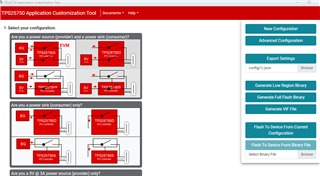Hi,
I am having some issues with the TPS25750. We have designed a prototype board with the TPS25750 as a feasibility study for USB-PD. In general use, the TPS25750 seems to work fine.
However, it gets into a certain state which I have difficulty getting it out of.
The state is as follows:
1) On startup, the boot-status register is read and DeadBattery bit is set and NoPatchConfiguration is set. (Note, I upload the configuration/patch over I2C)
Since the device indicates NoPatchConfiguration, I attempt to upload the patch over I2C. (This usually works fine, except in this case ...)
I follow the flow-chart (Execution flow Patch Burst Mode Example in the Host Interface Technical Reference Manual), and everything goes fine up until reading the result of the PBMc command.
So, having uploaded the configuration over I2C, I receive an ACK on the write transmission. Since the patch has been uploaded, I issue a PBMc command to the device, however, reading the data1 register results in a return code of 0x3, which I cannot make sense of from reading the manual... The rest of the output does not seem to indicate that anything has failed. However, upon completing PBMc with the result 0x3, I then wait for either patchloaded event or APP mode, and neither get set. So I am now stuck...







